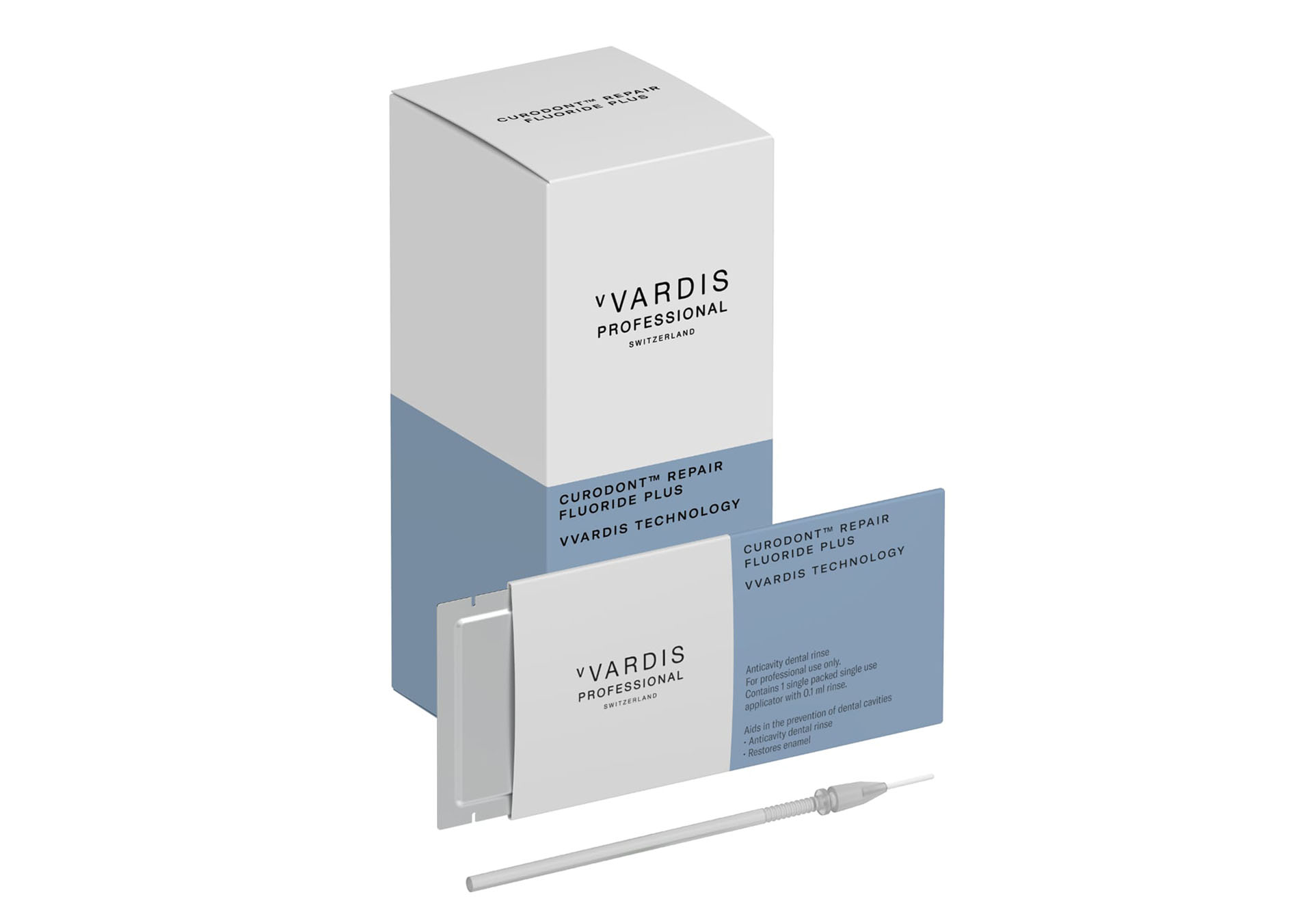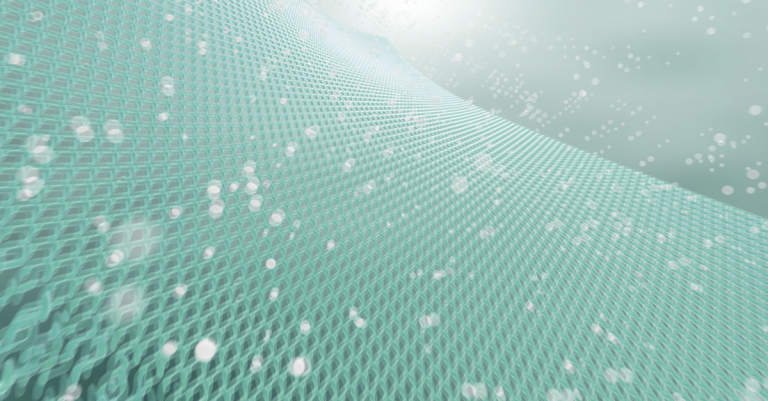Dr. Brian B. Nový is director of clinical innovation at the DentaQuest Institute in Westborough, Massachusetts, and a faculty member at Harvard School of Dental Medicine, Western University, and Loma Linda University School of Dentistry, all in the US. talks about Curodont Repair Fluoride Plus, a new technology that stops incipient tooth decay through guided remineralization of enamel.
Dr. Nový, what is Curodont Repair Fluoride Plus?
Curodont Repair Fluoride Plus is a remarkable new product that allows us to address early-stage tooth decay and move from a drill-and-fill mentality to a conservative, non-invasive one. It’s a novel idea that allows ions from one’s own saliva to diffuse into these early lesions rather than simply exploiting the surface zone.
What makes Curodont Repair Fluoride Plus so innovative for the dental industry?
Curodont is innovative for the dental industry because it allows us to respect the tooth crystal and preserve it instead of cutting it and trying to replace it with something inferior. It also needs remineralization much more deeply than we have ever done before. Curodont treatment actually extends to caries.
Dr. Brian B. Nový was the first dentist in the US to try this technology and has since treated many patients with Curodont Repair Fluoride Plus. (Image: vVARDIS)
How do you use Curodont Repair Fluoride Plus?
Curodont Repair Fluoride Plus is quite easy to use. You need to clean the tooth first. Then, if you believe that some remineralization may have already occurred and the surface zone is fairly well mineralized, it is necessary to open some pores in that surface zone. Then you need to activate the Curodont using a sponge, which is very different from a microbrush. There are a few different ways to use it. For example, I’ll take an instrument and hold down the end of the sponge and start twisting and squeezing it against the tooth. You can also fold it, depending on where you are in the mouth and what surface you are trying to put it on. I’ve found that you can usually apply a one-unit dose to three or maybe four teeth, depending on the surfaces you’re trying to apply it to.
What are the benefits of Curodont Repair Fluoride Plus for the dental office?
There are many benefits to using Curodont Repair Fluoride Plus in the dental office. It opens up a whole different dimension of how to treat tooth decay and it takes tooth decay treatment into people’s hands and allows you to use their skill set. Anyone who can apply fluoride varnish can apply this product, whether they are a hygienist or a dentist. The great thing is that you can apply Curodont to the tooth and verify with x-rays and clinical picture that the lesions do not get bigger over time. It is a huge victory that we can preserve the tooth crystal instead of replacing it with an inferior material.
What are the benefits of Curodont Repair Fluoride Plus for patients?
I think there are many benefits from a patient’s perspective. First, there is no pain in using Curodont. The patient only experiences the sensation of the liquid applied to the tooth. Second, there is no staining, as occurs with high-dose fluorides or silver diamine fluoride. Finally, there are no side effects.
Who wouldn’t want to put a liquid on a tooth instead of having an injection and then a drill in their mouth?
What is the difference between Curodont Repair Fluoride Plus and Diamine Silver Fluoride?
First, silver diamine fluoride will always leave a dark stain on the tooth. Even if potassium iodide is applied afterwards, there is always a silver phosphate stain on the tooth. This is not the case with Curodont Repair Fluoride Plus because it is a calcium seeking formula. Second, the taste is very different because silver diamine fluoride tastes horrible, and anyone who has ever had a child try it knows that the moment you use silver diamine fluoride and the child tastes it, the date is over. You don’t have this problem with Curodont Repair Fluoride Plus because it has little to no taste.
What is your experience with Curodont Repair Fluoride Plus?
I have probably been using Curodont Repair Fluoride Plus longer than anyone else in the US, I first started using it around 2017 and have been using it consistently ever since. My first experience with its use was when I put it on the teeth of some patients with a high risk of caries. These were patients who had trigeminal neuralgia. They were terrified of the dentist and could not come for traditional dental care because of their fear, and when we did clinical dentistry for them, it resulted in severe pain. These were the first patients I started using it on and they immediately accepted the treatment.
I followed some of these carious lesions over time using the Canary System laser. In my initial analysis, what I saw was that the lesions were usually half the size, meaning they were getting 50% more calcium and phosphate than they would have if we hadn’t done anything to them. Once I started seeing remineralization happening, I realized that the laser was catching that. I continue to notice the lesions I first experienced almost six years ago, and they still haven’t progressed.
I have also used it in some very extreme caries patients, such as university age diabetic patients who have uncontrolled diabetes. They are away from home for the first time, their oral hygiene tends to slip and the floss stops. I have found that Curodont has not produced the same type of remineralization in this group. I remember a breakdown that seemed to progress rather than be arrested. I decided to go into the tooth surgically to place a Class II restoration, but when I drilled into the tooth, there was no actual infected dentin in it. Instead, what I found was hard, clear dentin that was the same color it normally is. I realized that it was not necessary to cut this tooth.
Most patients now come in just assuming I’m going to put the liquid in their tooth, or they ask me about the condition of a cavity after having the liquid put in a few years ago. I’m happy to say it seems to be working. Every time we reapply it to a tooth and show that we’ve stopped the restorative cycle, we add to the body of evidence that pushes the envelope toward what we’re all trying to do in dentistry, which is make patients healthier.

Curodont Repair Fluoride Plus offers a biomimetic system for the non-invasive treatment of early-stage caries through guided enamel remineralization. (Image: vVARDIS)
How do you explain Curodont Repair Fluoride Plus to your patients?
I usually recommend it to patients who have an incipient or more proximal lesion and use it on these radiographically apparent small lesions. I tell my patients that many dentists would probably say that a filling is not needed yet. I give the patient some options. I ask if they would rather I wait and do nothing and just watch the cavity grow, or if they would rather have the tooth cut out and a filling put in. Of course, the other option is to stop eating sweets and brush their teeth incessantly. That might work too. Or would they rather I put in a liquid that can help the tooth crystal remineralize and reform and make the tooth harder? It can help them get over that bump and start the healing process.
How do you see Curodont Repair Fluoride Plus becoming part of future oral care protocols?
I see Curodont creating a whole new paradigm for how dentists are treated. I see dentistry moving toward oral health, especially when you look at value-based reimbursement and value-based care that patients learn about. They don’t need to have a restoration in their mouth. they can reverse their cavities through in-office liquid treatments and go home with new preventative products they can use.
It will promote the adoption of developments such as artificial technology to monitor caries lesions over time. We can put the technology in the hands of patients and they can monitor their cavities at home in their bathrooms and find out if their lesions are reversing or progressing. Curodont is just a perfect piece of the puzzle in this new vision of an oral health care system instead of just a restorative dentistry system.

